Which Of The Following Is An Example Of Expository Writing
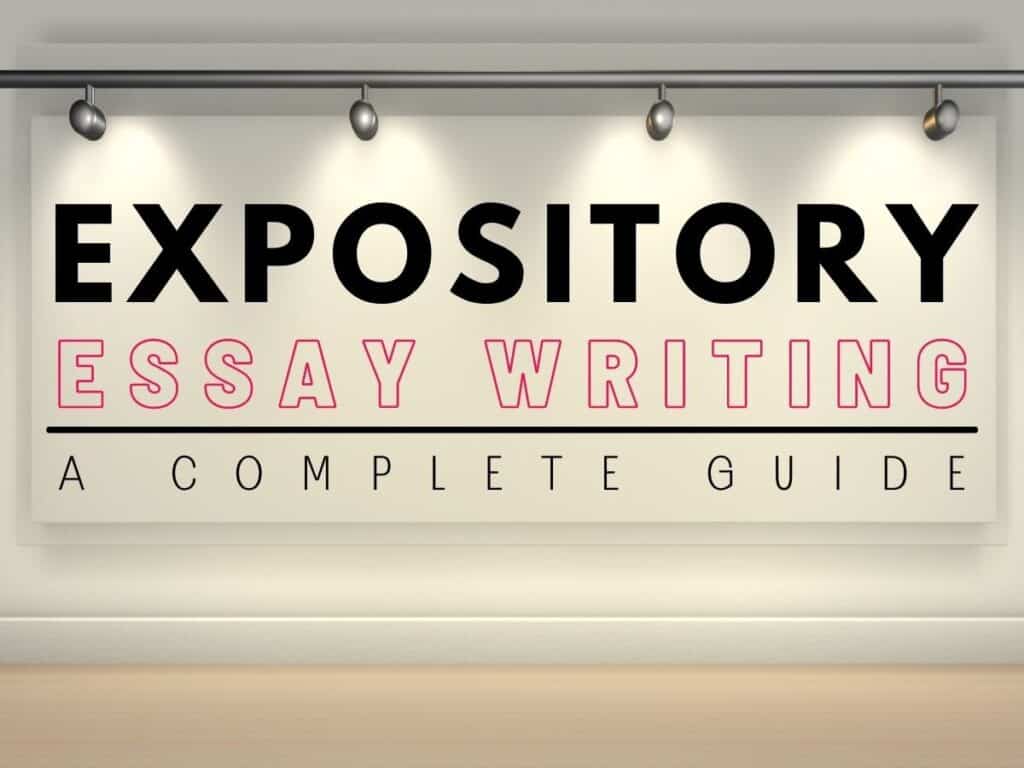
WHAT IS EXPOSITORY ESSAY WRITING?
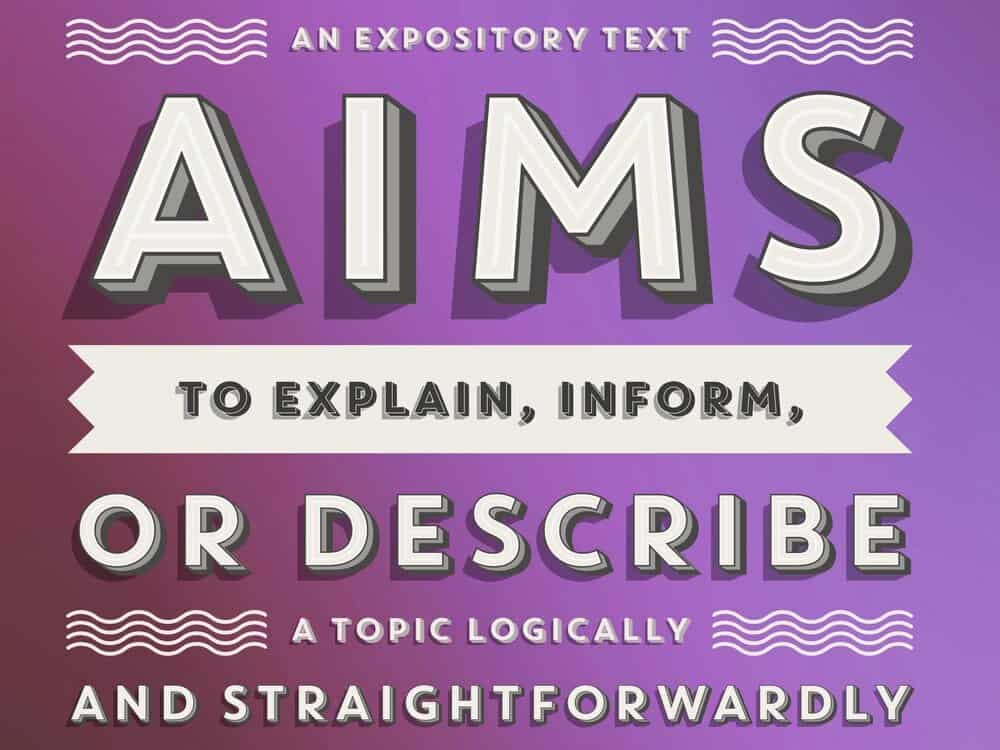
A major clue lies in the word itself. Expository writing 'exposes' something to the reader.
Though the term is sometimes used to include persuasive writing, a true expository text does not allow the writer's personal opinion to intrude into the text.
An expository text aims to explain, inform, or describe a topic logically and straightforwardly.
TYPES OF EXPOSITORY ESSAY
Just as there are many different types of expository texts (e.g. encyclopaedias, travel guides, information reports, etc.), there are also various types of expository essays.
The most common types of these expository essays are:

- Process Essays
- Cause and Effect Essays
- Problem and Solution Essays
- Compare and Contrast Essays
- Definition Essays
- Classification Essays
Let's take a quick look at each of these in turn. In the following section, you'll find a brief description of each expository essay type. Some notable features have been listed, and a suggested expository essay title has been provided for each.
THE PROCESS ESSAY

This is the how-to essay that often takes the form of a set of instructions. Also known as a procedural text, the process essay has some very specific features that aim to guide the reader on how to do or make something.
If you are interested in learning more about this type of writing, check out our information-packed article here.
Features of a process essay
Some of the main features of the process essay include:
'How to' title
- 'How to' title
- Numbered or bullet points
- Time connectives
- Imperatives (bossy words)
- List of resources
- Diagrams
Suggested Title: How to Create Your Own Website
THE CAUSE AND EFFECT ESSAY

The purpose of a cause and effect essay is to explore the causal relationships between things. Often, essays like this will bring the focus back to a single cause. These essays frequently have a historical focus.
As an expository essay, the text should tend to focus on facts rather than assumptions. However, cause and effect essays sometimes explore hypothetical situations too.
Notes:
There are two main ways to structure a cause and effect essay.
The Block Structure presents all the causes first. The writer then focuses on the effects of these causes in the second half of the essay.
The Chain Structure presents each cause and then immediately follows with the effects it created.
Suggested Title: Covid-19 Restrictions and the Effects on Family Life
THE PROBLEM AND SOLUTION ESSAY

In this type of essay, the writer first identifies a problem and then explores the topic from various angles to ultimately propose a solution. It has many similarities with the cause and effect essay.
Notes:
While the problem and solution essay can use the block and chain structures as outlined above – just substitute cause with problem and effect with a solution – it will also usually work through the following elements:
- Identifies a problem
- Contains a clear thesis statement
- Each paragraph has a topic sentence
- Supports with facts, examples, evidence
- The conclusion summarizes the main points
Suggested Title: What Can Be Done to Prevent Bullying in Schools?
THE COMPARE AND CONTRAST ESSAY

In this type of essay, students evaluate the similarities and differences between two or more things, ideas, people, etc. Usually, the subjects will belong in the same category.
Notes:
The compare and contrast expository essay can be organized in several different ways. Three of these are outlined below.
In the three structures outlined, it is assumed that two subjects are being compared and contrasted. Of course, the precise number of paragraphs required in the text will depend on the number of points the student wishes to make and the number of subjects being compared and contrasted.
Suggested Title: In-Class or Remote Learning: Which Is Best?
DEFINITION ESSAYS

This type of essay provides a detailed description and definition of a word or phrase. This can be a concrete term such as car or glass, or it can be a more abstract concept such as love or fear.
Notes:
A definition essay focuses on comprehensively explaining the purpose and meaning of a term. It will frequently contain some or all of the following elements:
- A definition of the term
- An analysis of its meaning
- The etymology of the term
- A comparison to related terms
- Examples to illustrate the meaning
- A summary of the main points
Suggested Title: What Is Beauty?
CLASSIFICATION ESSAYS

Similar in many ways to a definition essay, a classification essay sorts or organizes things into various groups or categories. This type of essay then focuses on explaining each group or category in detail.
Notes:
Classification essays focus on:
- Sorting things into functional categories
- Ensuring each category follows a common organizing principle
- Provides examples that illustrate each category.
Suggested Title: Vacation Destinations
TYPES OF EXPOSITORY ESSAYS SORTING ACTIVITY

To help students gain some experience identifying the features of the different expository essay types, gather together a selection of different essays and challenge students to work together in groups to classify each essay according to the criteria above.
EXPOSITORY ESSAY STRUCTURE
TEXT ORGANIZATION Organize your thoughts before writing.
CLARITY Use clear and concise wording. There is no room for banter.
THESIS STATEMENT State position in direct terms.
TOPIC SENTENCE Open each paragraph with a topic sentence.
SUPPORTING DETAIL Support the topic sentence with further explanation and evidence.
LINK End each body paragraph by linking to the next.
EXPOSITORY ESSAY TYPES
PROCESS Tell your audience how to achieve something, such as how to bake a cake.
CAUSE & EFFECT Explore relationships between subjects, such as climate change and its impact.
PROBLEM & SOLUTION Explain how to solve a problem, such as improve physical fitness.
COMPARE & CONTRAST Compare and contrast two or more items, such as life in China life vs life in the United States or Australia.
DEFINITION Provides a detailed definition of a word or phrase such as self-confidence.
CLASSIFICATION Organizes things into categories or groups such as types of music.
THE BASIC STRUCTURE OF AN EXPOSITORY ESSAY
While there are many types of expository essays, the basic underlying structure is the same. The Hamburger or 5-Paragraph Essay structure serves as an excellent scaffold on which students can build their articles.
To find out more about this essay format, check out our detailed article here.
But let's take a quick look at the expository essay outline.
INTRODUCTION:
This is the top bun of the burger, and here the student introduces the topic of the exposition. This will usually consist of a general statement on the subject, providing an overview of what the essay is about. It may also preview each major section, indicating what aspects of the subject will be covered in the text. These sections will likely relate to the headings and subheadings identified at the planning stage.
MAIN BODY:
If the introduction is the top bun of the burger, then each body paragraph is a beef patty. Self-contained in some regards, each patty forms an integral part of the whole.
EXPOSITORY PARAGRAPHS
Each of the body paragraphs deals with one idea or piece of information. For more complex topics, these may be grouped under a common heading, and the number of paragraphs will depend on the complexity of the topic. For example, an expository text on wolves may include a series of paragraphs under headings such as habitat, breeding habits, what they eat, etc.
Each paragraph should open with a topic sentence indicating to the reader what the paragraph is about. The following sentences should further illuminate this main idea through discussion and/or explanation. Encourage students to use evidence and examples here, whether statistical or anecdotal. Remind students to keep things factual – this is not an editorial piece for a newspaper!
EXPOSITORY PARAGRAPH EXAMPLE
"I hate mosquitoes because they annoy me while I am outside. For example, whenever we have barbeques, they want to swarm all around the food. Also, when I go fishing with my Dad, we always have to wear bug spray. The bug spray always stinks to high heaven! Then, if you do not want to use bug spray, the only other way to get them to leave you alone is to wear long sleeves. Yet, who wants to wear long sleeves when it is hot outside? Nothing ruins your day like bloodsucking mosquitoes" – This paragraph uses a first-person perspective to identify a problem. (mosquitoes.)
EXPOSITORY CONCLUSION:
Generally, the conclusion of any essay should neatly close the circle by summarizing the information through restating the main ideas in a unique way. This bottom bun of the hamburger essay is no different. Remind students that a proper expository essay is objective in nature and to beware of injecting their opinion or bias into the piece. The purpose here is to inform rather than persuade.
FEATURES OF EXPOSITORY WRITING

Expository writing is usually not the place for flowery flourishes of figurative imagery! Students should be encouraged to select a straightforward language that is easy for the reader to understand. After all, the aim here is to inform and explain, and this is best achieved with explicit language.
As we've seen, there are several variations of the expository essay, but the following are the most common features that students will need to include.
TITLE:
The title should be functional. It should inform the reader instantly what it is they will learn about in the text. This is not the place for opaque poetry!
CONTENTS:
In long essays, a table of contents will help the reader locate useful information quickly. Usually, the page numbers found here will be linked to headings and subheadings to be found in the text.
HEADINGS / SUBHEADINGS:
These assist the reader in finding information by summarizing the content in their wording.

GLOSSARY:
Usually listed in alphabetical order, the glossary defines unusual or topic-specific vocabulary and is sometimes accompanied by pictures, illustrations etc.
INDEX:
In longer texts, the index allows the reader to identify where to find specific information. An index is much more detailed than a table of contents.
VISUAL FORMS OF INFORMATION
Expository essays sometimes support the text with visuals, such as:
- Pictures / Illustrations / Photographs:
These can be used to present a main idea or concept within the text and are often accompanied by a caption explaining what the image shows. Photographs can offer a broad overview or a close-up of important details.

- Diagrams:
Diagrams are a great way to convey complex information quickly. They should be labelled clearly to ensure the reader knows what they are looking at.
- Charts and Graphs:
These are extremely useful for showing data and statistics in an easy-to-read manner. They should be labelled clearly and correspond to the information in the nearby text.
- Maps:
Maps may be used to explain where something is, or was, located.

Tools & Resources
Use the resources and tools below with your students to improve their writing skills through proven teaching strategies.

EXPOSITORY ESSAY EXAMPLE
One of the best ways to understand the different features of expository essays is to see them in action. The sample essay below is a definition essay, but it shares many of its features with other expository essays.

EXPOSITORY WRITING PROMPTS
FINAL THOUGHTS
Your students will need a good understanding of the basic features of expository writing and a firm grasp of the hamburger essay structure itself. As with any writing genre, the prewriting stages are important too. This is particularly true for expository writing.
As this genre of writing is designed primarily to inform the reader, good research and notetaking are essential for your students to produce a well-written text. Expository writing offers excellent opportunities for students to develop these critical skills, skills that will be very useful to them as they continue in their education.
Likewise, the redrafting and editing of their texts are very important. Facts and statistics should be checked and rechecked, and language is edited tightly to ensure the language is clear and concise throughout.
The ability to produce a well-written expository essay is an extremely beneficial skill for a student to possess as they move through life. It encourages good organizational skills and enriches the student's understanding of the world around them.
And, while we grade their efforts, we might even learn a thing or two ourselves!
A COMPLETE UNIT ON ESSAY WRITING
Where can I find a complete unit of work on how to write great expository essays?
We pride ourselves on being the web's best resource for teaching students and teachers how to write an exposition. We value the fact you have taken the time to read our comprehensive guides to understand the fundamentals of writing skills.
We also understand some of you just don't have the luxury of time, or the resources to create really engaging resources exactly when you need them.
If you are time-poor and looking for an in-depth solution that encompasses all of the concepts outlined in this article I strongly recommend taking a look at the "Writing to Persuade and Influence Unit."
Working in partnership alongside Innovative Teaching Ideas we confidently recommend this resource as an all in one solution to teach how to write an exposition.
Within this unit, you will find over 140 pages of engaging and innovative teaching ideas.
ESSAY WRITING CHECKLIST & RUBRIC BUNDLE

EXPOSITORY ESSAY TUTORIAL VIDEO
ARTICLES RELATED TO EXPOSITORY ESSAY WRITING
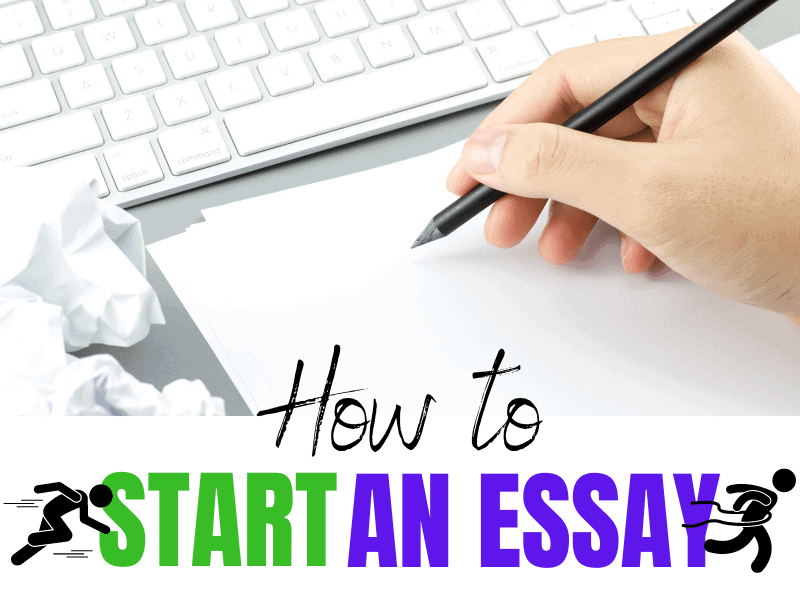
How to Start an Essay with Strong Hooks and Leads
"A good start is half the work"Old Irish Proverb HOW TO START AN ESSAY: A COMPLETE GUIDE Getting started is often the hardest part of writing an essay and it's one of the main reasons our students are prone to leaving their writing tasks to the last possible minute. But, what if we were able…

How to write a perfect 5 Paragraph Essay
How to Write a 5 Paragraph Essay: A Complete Guide Essay writing can be the bane of many a student's life. Gone are the days when many students tried writing in big letters to quickly fill the allotted number of pages with the minimum of effort. Now, it's all constant word count checks and taking…

Top 5 Essay Writing Tips
The Top 5 Fundamentals of Essay Writing In this article, we are going to explore the five most important elements of writing great essays. These essay writing tips are provided for teachers and students to master the craft of essay writing in the classroom. At the end of the article, we will show you the…
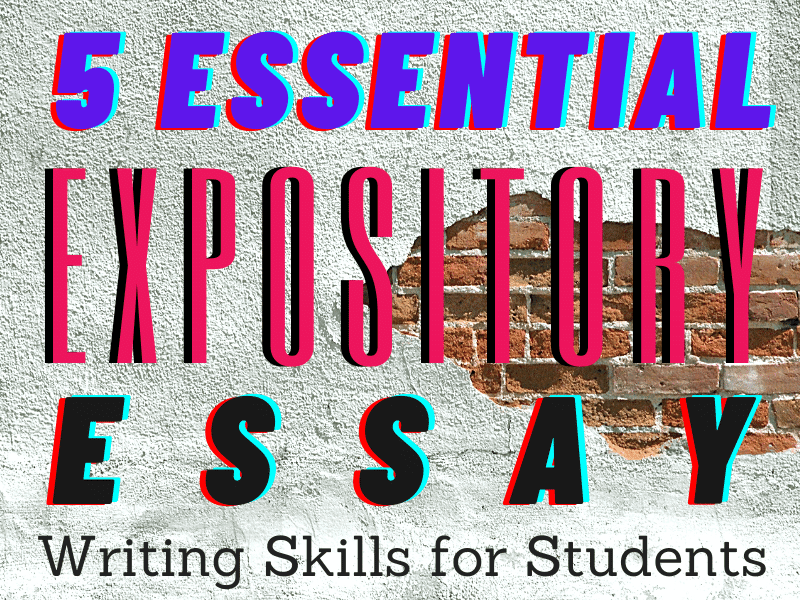
Top 5 Expository Essay Writing Tips
Learn the essential expository writing skills with our complete guide for teachers and students.
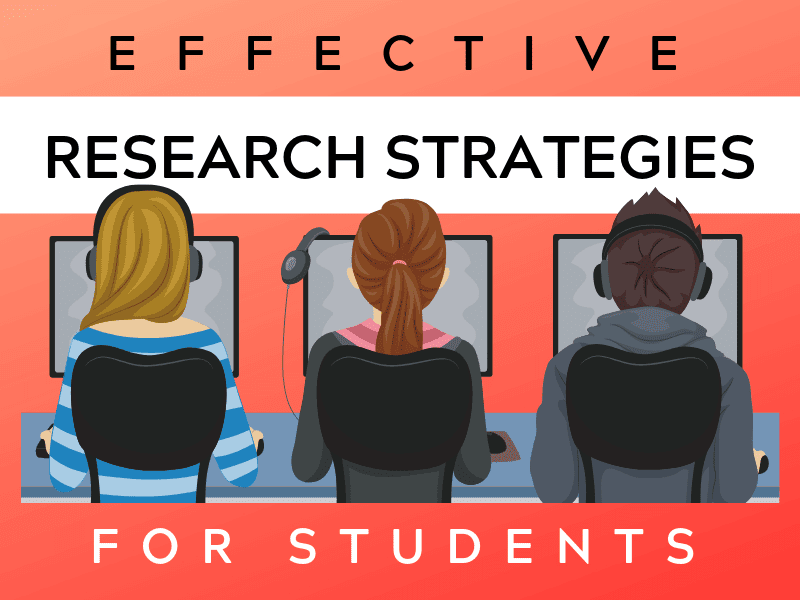
Top Research strategies for Students
What are the essential research strategies for students? Not so long ago, accessing information required legwork. Real legwork in the form of actually walking to the library and searching through the innumerable books organised using an archaic system called the Dewey Decimal System. Things are much less complicated these days. In this wired age, accessing…
Content for this page has been written by Shane Mac Donnchaidh. A former principal of an international school and university English lecturer with 15 years of teaching and administration experience. Shane's latest Book the Complete Guide to Nonfiction Writing can be found here. Editing and support for this article have been provided by the literacyideas team.
Which Of The Following Is An Example Of Expository Writing
Source: https://literacyideas.com/expository-essays/
Posted by: barronciame1947.blogspot.com

0 Response to "Which Of The Following Is An Example Of Expository Writing"
Post a Comment